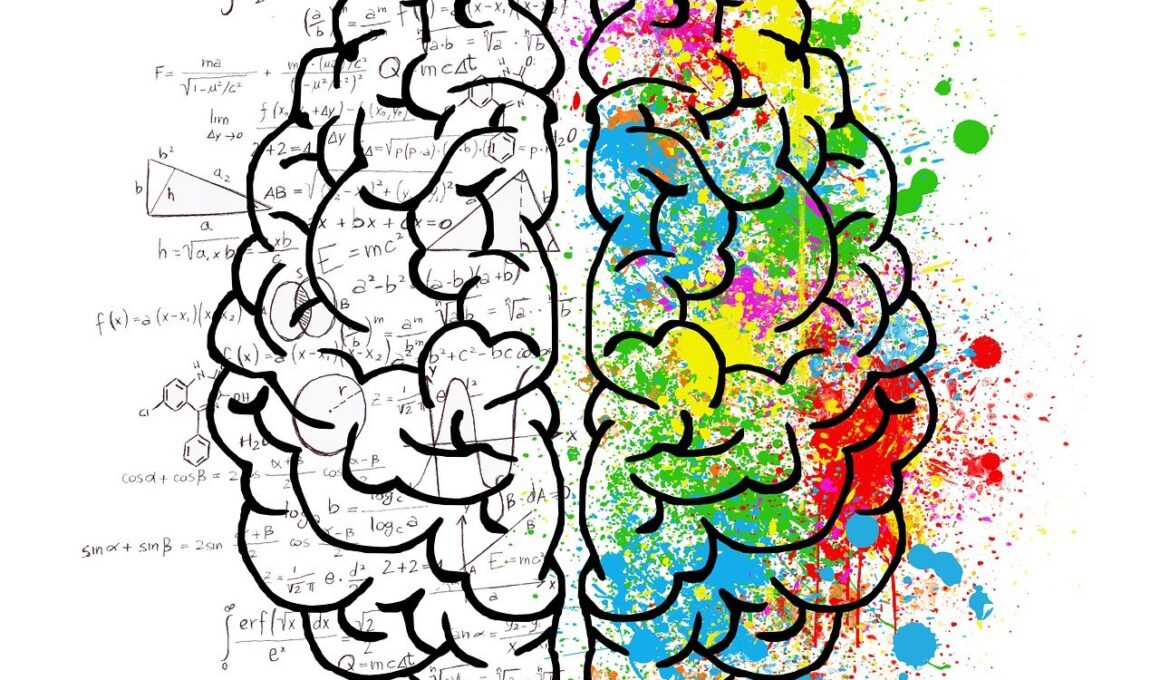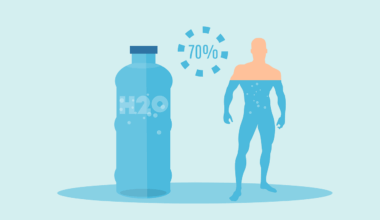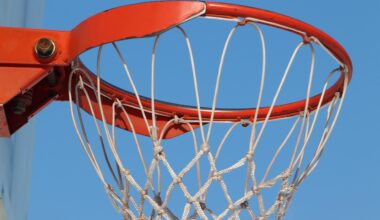Understanding and Managing Performance Anxiety in Youth Sports
Performance anxiety is a common issue encountered by young athletes in various sports disciplines. It often manifests as a fear of failure and pressure to perform, revealing detrimental effects on their performance and overall experience. Understanding the roots of performance anxiety is crucial for coaches and parents alike. Young athletes need to recognize that anxiety is a natural human response triggered by stressors. By fostering an environment that emphasizes skill development over results, parents and coaches can help mitigate these pressures. Additionally, education about the physiological responses to anxiety, such as increased heart rate and sweating, can demystify sensations young athletes may experience during competition. Practicing relaxation techniques, like deep breathing or visualization, can also assist athletes in regaining composure and focus when anxiety surfaces. The goal is to create a supportive atmosphere where mistakes are welcomed as learning experiences. Regular discussions with athletes about their feelings related to practice and competition can foster open communication. Moreover, incorporating team-building activities can foster camaraderie, thereby easing individual fears of judgment and failure when exposed to competition. This proactive approach can enhance resilience and confidence among young athletes.
One of the first steps in managing performance anxiety is teaching young athletes to set realistic goals. SMART goals (Specific, Measurable, Achievable, Relevant, Time-bound) are particularly effective in providing focus and direction. By involving athletes in the goal-setting process, they can develop a sense of ownership over their performance journey. This ownership reduces anxiety and encourages accountability, as athletes become more invested in their progress. Additionally, it’s vital to emphasize a growth mindset in this context. Athletes should understand that skills develop through hard work and persistence. Acknowledging improvement over perfection helps reduce pressure associated with performance. Incorporating regular feedback during practices can reinforce this growth mindset. Providing constructive criticism while recognizing efforts fosters an encouraging environment. Coaches should also communicate the understanding that setbacks are part of the journey, which normalizes the experience for the athletes. Regular feedback helps young athletes to see their development beyond merely winning or losing. Encouraging them to reflect on their performances helps in utilizing each experience as a learning opportunity, not a measure of their worth. This mindset shift can alleviate performance anxiety significantly.
Utilizing Visualization Techniques
Visualization is a powerful tool widely utilized in sports psychology. Athletes can use mental imagery to picture themselves successfully executing skills or strategies in high-pressure situations. This technique allows young athletes to mentally rehearse their performance without any risk, which directly contributes to building confidence. Coaches can guide athletes through various visualization exercises, encouraging them to imagine positive outcomes while eliminating negative thoughts. Enhancing the sensory details of the visualization process improves its effectiveness. Athletes should strive to picture their surroundings, hear the crowd, and even feel the equipment they will use. Regular practice of visualization, particularly before competitions, can significantly reduce anxiety. It teaches athletes to remain calm and focused, envisioning the flow of their game or performance. Furthermore, visualization can aid in preparing for unexpected events. Athletes can rehearse coping mechanisms for unexpected challenges or mistakes, thereby reducing the fear of failure. This preparation further cultivates a resilient mindset in young athletes, empowering them to face challenges with confidence. As they develop a habitual practice of visualization, they become more adept at dealing with performance anxiety, ultimately enhancing their competitiveness and enjoyment of sports.
The Role of Physical Preparation
Physical preparation in sports significantly contributes to the mental readiness of young athletes. When athletes engage in consistent training, they develop a level of skill and fitness that boosts their confidence. Coaches should implement comprehensive training programs that not only focus on technical skill development but also incorporate strength, endurance, and flexibility training. A well-rounded training regime prepares athletes for the physical demands of their sport, alleviating worries about their capabilities during competitions. Additionally, ensuring athletes are adequately hydrated and nourished plays a critical role in both physical and mental performance. A balanced diet and hydration can directly influence energy levels, focus, and mood. Athletes who feel physically prepared are less likely to feel anxious about upcoming events. Furthermore, implementing regime variety can keep training stimulating and reduce mental fatigue. This diversification engages the athletes more deeply, promoting enjoyment and reducing the likelihood of burnout. Coaches should also emphasize the importance of recovery, as athletes need downtime to recharge physically and mentally. By encouraging healthy recovery habits, such as sleep, stretching, and relaxation techniques, coaches can further help in decreasing overall anxiety levels among young athletes.
Parents play a critical role in the emotional well-being of young athletes. Their encouragement and support can serve as a buffer against performance anxiety. Open conversations about their children’s feelings concerning sports can create a supportive environment, enabling athletes to express their worries without judgment. Parents should strive to emphasize effort and personal growth over the outcomes of a specific game or event. This perspective reinforces the notion that competition is about enjoyment and self-improvement, rather than solely winning. Attending practices and games can allow parents to provide on-the-spot support, cheering not just for successful plays, but for hard work and dedication. Limiting pressure by avoiding overly critical comments can significantly influence how athletes perceive their performance. Parents should remember their children’s mental health comes first, often meaning prioritizing emotional support over results. Active participation in sports, such as volunteering at events, can enhance the sense of community, further encouraging young athletes to push through their anxiety. Building a positive relationship between athletes and parents creates an environment conducive to open dialogue, ultimately fostering a stronger emotional connection rooted in understanding and respect. This connection can alleviate performance pressure over time.
Creating a Supportive Team Environment
Team dynamics play a vital role in mitigating performance anxiety among young athletes. A supportive team environment fosters camaraderie and encouragement, which reduces individual pressure to perform. Coaches play an essential role in fostering a positive atmosphere, ensuring all athletes feel valued and respected. Team-building exercises can help athletes develop close connections, helping them lean on each other during high-pressure situations. When athletes feel part of a larger group, anxiety can diminish as they realize their team supports them. Such relationships also create a space for athletes to share their fears and experiences. Furthermore, implementing a mentorship system can significantly benefit young athletes struggling with anxiety. Pairing younger athletes with more experienced teammates offers guidance and reassurance, fostering a sense of belonging. Celebrating team achievements, no matter how small, helps build confidence collectively, allowing each athlete to feel they contribute to the team’s success. Coaches should encourage teammates to provide positive reinforcement and constructive feedback to build resilience among members. Additionally, organizing social events apart from practices and competitions can strengthen bonds, allowing athletes to consider their team as a second family. Such connections diminish isolation feelings, helping in anxiety reduction.
In conclusion, understanding and managing performance anxiety involves a multifaceted approach. It requires support from coaches, parents, and teammates, all working in tandem to create a positive environment. Educating young athletes about anxiety is the first step in breaking down misconceptions around it. As they learn coping strategies like visualization and setting realistic goals, they can become better equipped to handle the pressures of competition. Regular practice, both physical and mental, prepares athletes to face challenges head-on, while strong support systems foster resilience. By incorporating various techniques—such as meditation, breathing exercises, and physical fitness—athletes can develop the skills necessary to manage their anxiety effectively. It’s essential to celebrate each athlete’s progress, enhancing their self-esteem and motivation to continue participating in sports. Coaches and parents should remain attuned to signs of anxiety, encouraging open discussions that can help athletes articulate their feelings. With the right tools and support, young athletes can not only manage their performance anxiety but embrace their experiences in sports fully. Ultimately, instilling these practices ensures that their time in sports remains enjoyable and fulfilling while also encouraging growth, learning, and fun.


